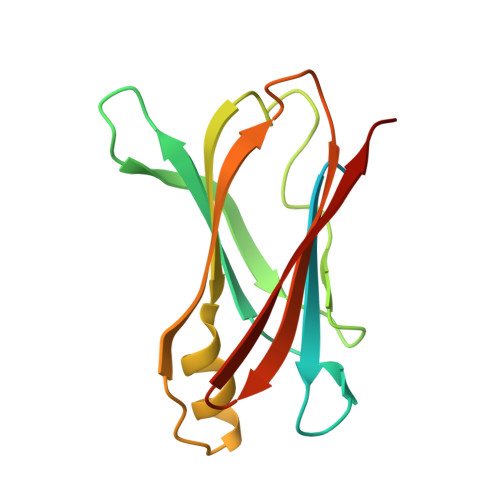Interactions of tolcapone analogues as stabilizers of the amyloidogenic protein transthyretin.
Loconte, V., Cianci, M., Menozzi, I., Sbravati, D., Sansone, F., Casnati, A., Berni, R.(2020) Bioorg Chem 103: 104144-104144
- PubMed: 32791384
- DOI: https://doi.org/10.1016/j.bioorg.2020.104144
- Primary Citation of Related Structures:
6SUG, 6SUH - PubMed Abstract:
Transthyretin (TTR) is an amyloidogenic homotetramer involved in the transport of thyroxine and retinol in blood and cerebrospinal fluid. TTR stabilizers, such as tolcapone, an FDA approved drug for Parkinson's disease, are able to interact with residues of the thyroxine-binding sites of TTR, both wild type and pathogenic mutant forms, thereby stabilizing its tetrameric native state and inhibiting amyloidogenesis. Herein, we report on the synthesis of 3-deoxytolcapone, a novel stabilizer of TTR. The high-resolution X-ray analyses of the interactions of 3-O-methyltolcapone and 3-deoxytolcapone with TTR were performed. In the two TTR-ligand complexes the tolcapone analogues establish mainly H-bond and hydrophobic interactions with residues of the thyroxine-binding site of the TTR tetramer. Both compounds are capable of high and selective stabilization of TTR in the presence of plasma proteins, despite their markedly different 'forward' and 'reverse' binding mode, respectively. In fact, the loss or the weakening of stabilizing interactions with protein residues of 3-deoxytolcapone in comparison with tolcapone and 3-O-methyltolcapone is compensated by new interactions established at the dimer-dimer interface. Our data, coupled with previously reported data on the pharmacokinetics properties in humans of tolcapone and 3-O-methyltolcapone, further support the relevance of the latter tolcapone analogue as TTR stabilizer.
Organizational Affiliation:
iHuman Institute, ShanghaiTech University, 201210 Pudong, Shanghai, China.















